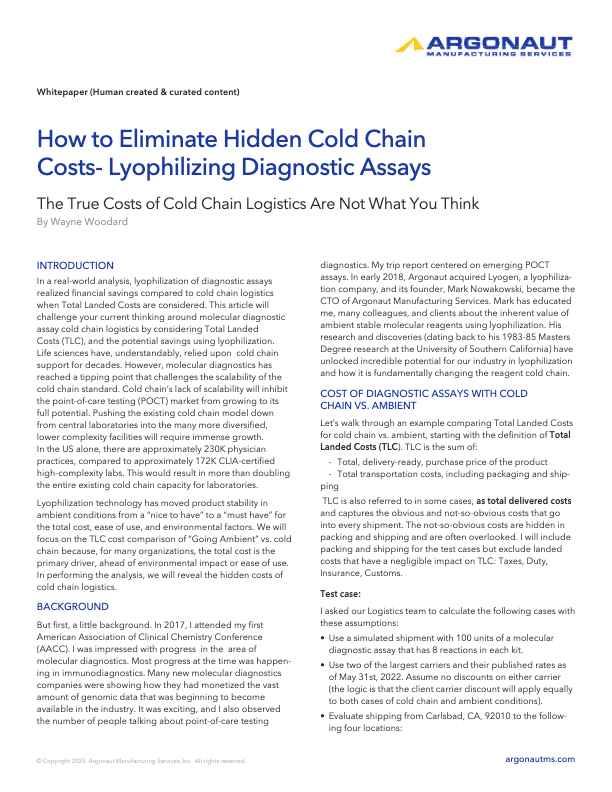Save on Cost for Cold Chain Logistics by Lyophilizing Diagnostic Assays
In a real-world analysis, lyophilizing diagnostic assays realized financial savings compared to cold chain logistics when Total Landed Costs (TLC) are considered.
This article will challenge your current thinking around molecular diagnostic assay cold chain logistics by considering TLC, and the potential savings using lyophilization. Life sciences have, understandably, relied upon cold chain support for decades. However, molecular diagnostics has reached a tipping point that challenges the scalability of the cold chain standard. Cold chain’s lack of scalability will inhibit the point-of-care testing (POCT) market from growing to its full potential.
Pushing the existing cold chain model down from central laboratories into the many more diversified, lower complexity facilities will require immense growth. In the US alone, there are approximately 230K physician practices, compared to approximately 172K CLIA-certified high-complexity labs. This would result in more than doubling the entire existing cold chain capacity for laboratories.
Lyophilization technology has moved product stability in ambient conditions from a “nice to have” to a “must have” for the total cost, ease of use, and environmental factors. We will focus on the TLC cost comparison of “Going Ambient” vs. cold chain because, for many organizations, the total cost is the primary driver, ahead of environmental impact or ease of use. In performing the analysis, we will reveal the hidden costs of cold chain logistics.
Read this white paper to learn how you can save on shipping and cold chain cost by lyophilizing diagnostic assays.
